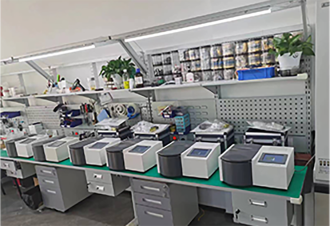 English
English


Winding Resistance Measurement Device for Electric Motor Testing and Analysis
Understanding Winding Resistance Testers Importance and Applications
In the realm of electrical engineering and maintenance, ensuring the reliability and efficiency of electrical machinery is paramount. One critical aspect of this maintenance is evaluating the winding resistance of motors and transformers, which is where a winding resistance tester becomes indispensable. A winding resistance tester is a specialized instrument designed to measure the resistance of electrical windings in devices like motors, generators, and transformers. This article explores the significance of winding resistance testing, its applications, and features of a reliable tester.
Importance of Winding Resistance Testing
Winding resistance plays a vital role in the performance of electrical machines. A low resistance value indicates that the windings have good conductivity, while high resistance can signify deterioration, poor connections, or insulation breakdown. Regular testing is essential for several reasons
1. Preventing Failures Over time, windings can deteriorate due to factors such as heat, moisture, and mechanical stress. A rise in resistance can lead to overheating, potential failure, and unplanned downtime. Regular testing helps in identifying these issues before they escalate.
2. Ensuring Efficiency High resistance can result in excessive energy losses in the form of heat. By maintaining optimal winding resistance, machines can operate more efficiently, thus conserving energy and reducing operational costs.
3. Safety Compliance Many industries have stringent safety standards requiring regular testing of electrical equipment. Using a winding resistance tester helps organizations comply with these regulations and ensures the safety of personnel.
4. Predictive Maintenance By monitoring winding resistance trends over time, engineers can implement predictive maintenance strategies. Analyzing resistance changes can provide insights into the health of the equipment, allowing for timely interventions.
Applications of Winding Resistance Testers
Winding resistance testers are utilized in various sectors, including
- Industrial Manufacturing These testers are essential for the maintenance of large motors and transformers used in manufacturing processes. They ensure that machinery operates smoothly and prevents production disruptions.
- Energy Sector In power plants and substations, winding resistance testers are critical for monitoring the condition of transformers and generators, contributing to the reliability of power distribution
.winding resistance tester

- Transportation Electric vehicles and trains use large motors that require regular maintenance. Winding resistance testing ensures that these systems remain functional and safe.
- Aerospace In aircraft, the reliability of electrical systems is paramount. Winding resistance testers help maintain the integrity of motors and generators used in avionics and propulsion systems.
Key Features of a Winding Resistance Tester
When selecting a winding resistance tester, several features should be considered to ensure accurate and reliable measurements
1. Measurement Range The tester should accommodate a wide range of resistance values to suit various applications. High-quality testers can measure from micro-ohms to kilo-ohms.
2. Test Voltage Options The ability to select different test voltages is crucial, as different windings may require specific voltages for accurate testing without causing damage.
3. Data Logging and Analysis Modern testers often come equipped with data logging capabilities, enabling users to record resistance measurements over time. The ability to analyze trends enhances predictive maintenance efforts.
4. Portability A lightweight and portable tester allows for on-site testing, which is particularly advantageous in large industrial settings.
5. Safety Features Safety is paramount in electrical testing. A good tester should feature protective measures such as insulation resistance monitoring to prevent damage to the device and ensure operator safety.
Conclusion
Winding resistance testers are essential tools in the maintenance of electrical machines, playing a crucial role in preventing failures, ensuring efficiency, and maintaining safety standards. By investing in high-quality equipment and adhering to regular testing schedules, industries can enhance the reliability and longevity of their electrical assets, ultimately leading to improved operational efficiency and safety.
-
Differences between open cup flash point tester and closed cup flash point testerNewsOct.31,2024
-
The Reliable Load Tap ChangerNewsOct.23,2024
-
The Essential Guide to Hipot TestersNewsOct.23,2024
-
The Digital Insulation TesterNewsOct.23,2024
-
The Best Earth Loop Impedance Tester for SaleNewsOct.23,2024
-
Tan Delta Tester--The Essential Tool for Electrical Insulation TestingNewsOct.23,2024





